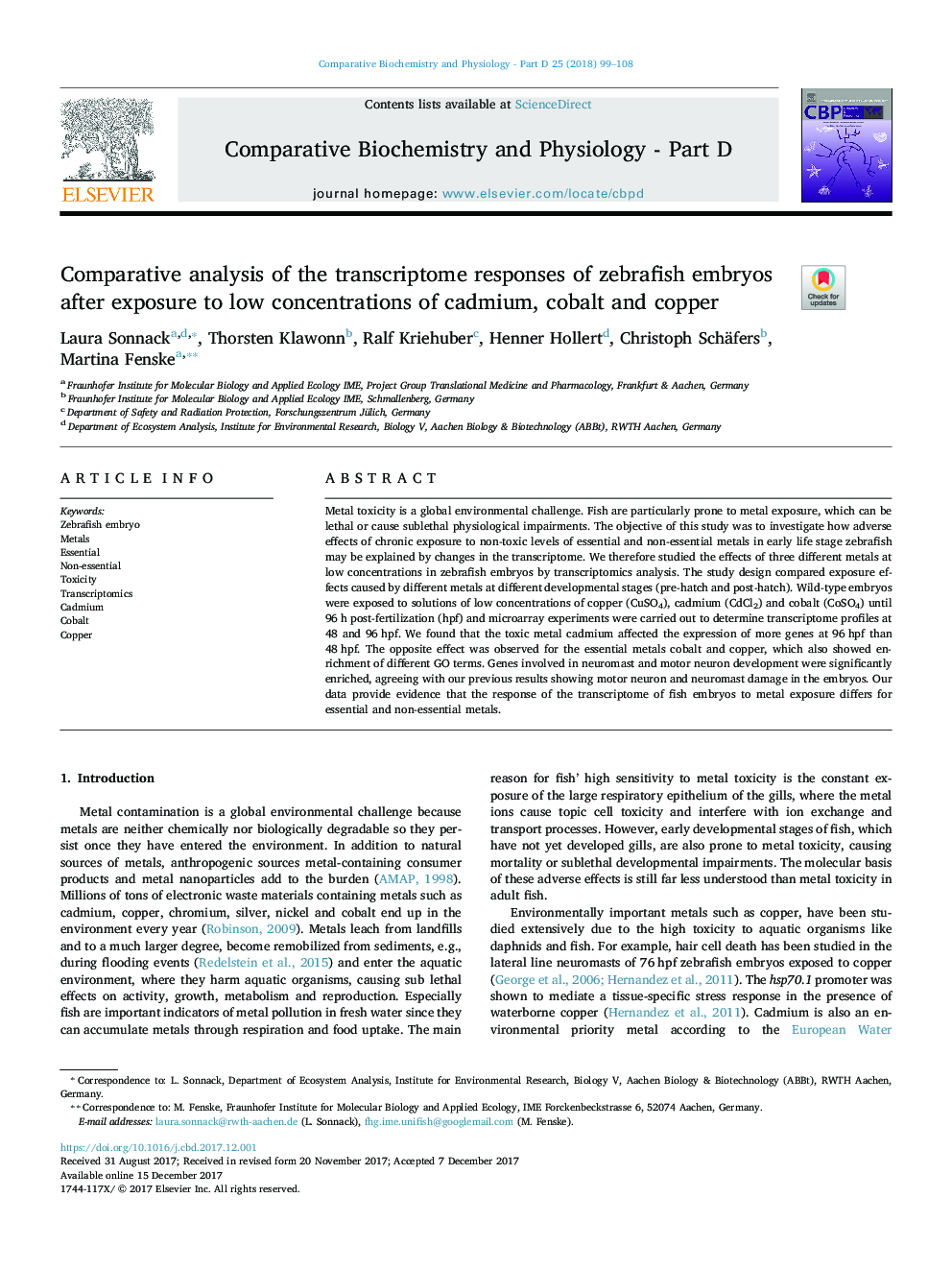| Article ID | Journal | Published Year | Pages | File Type |
|---|---|---|---|---|
| 8319276 | Comparative Biochemistry and Physiology Part D: Genomics and Proteomics | 2018 | 10 Pages |
Abstract
Metal toxicity is a global environmental challenge. Fish are particularly prone to metal exposure, which can be lethal or cause sublethal physiological impairments. The objective of this study was to investigate how adverse effects of chronic exposure to non-toxic levels of essential and non-essential metals in early life stage zebrafish may be explained by changes in the transcriptome. We therefore studied the effects of three different metals at low concentrations in zebrafish embryos by transcriptomics analysis. The study design compared exposure effects caused by different metals at different developmental stages (pre-hatch and post-hatch). Wild-type embryos were exposed to solutions of low concentrations of copper (CuSO4), cadmium (CdCl2) and cobalt (CoSO4) until 96Â h post-fertilization (hpf) and microarray experiments were carried out to determine transcriptome profiles at 48 and 96Â hpf. We found that the toxic metal cadmium affected the expression of more genes at 96Â hpf than 48Â hpf. The opposite effect was observed for the essential metals cobalt and copper, which also showed enrichment of different GO terms. Genes involved in neuromast and motor neuron development were significantly enriched, agreeing with our previous results showing motor neuron and neuromast damage in the embryos. Our data provide evidence that the response of the transcriptome of fish embryos to metal exposure differs for essential and non-essential metals.
Related Topics
Life Sciences
Biochemistry, Genetics and Molecular Biology
Biochemistry
Authors
Laura Sonnack, Thorsten Klawonn, Ralf Kriehuber, Henner Hollert, Christoph Schäfers, Martina Fenske,
